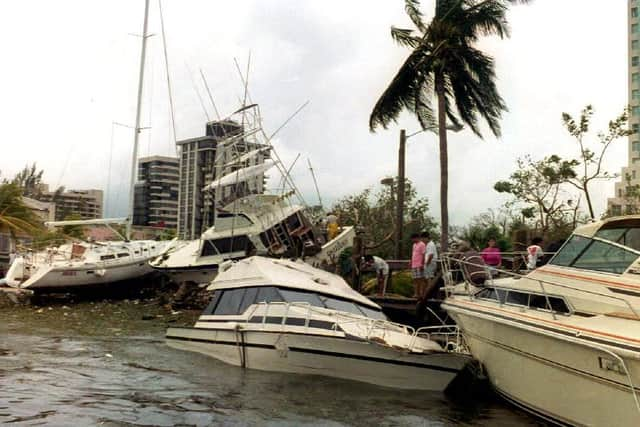Climate change: Insurance industry is counting the cost of global warming and some firms are doing something about it – Dr Richard Dixon
The insurance industry is increasingly vulnerable to climate change as ‘natural’ disasters become more and more frequent, and payouts spiral upwards. This month’s floods in Scotland will see home and business owners making claims on their insurance and firms looking to put up premiums on those properties which were hit this time.
The industry really woke up to climate change when Category 5 Hurricane Andrew hit Florida in 1992. Suddenly lots of expensive property owned by very rich people was destroyed and the insurance bill came to an estimated $15 billion ($33bn in today’s prices) from just one event. Just in the US, average insurance payouts are now running at $100bn a year, a 20-fold increase over the last 25 years.
Advertisement
Hide AdAdvertisement
Hide AdAnd of course, there is huge inequity built into the system. If you were poor in Florida in 1992, you were much more likely to be underinsured or not insured at all. If you were a victim of last year’s massive floods in Pakistan or this February’s Cyclone Freddy in Madagascar, Malawi, Mozambique or Zimbabwe, there is little chance that you were insured. Insurance giant Swiss Re estimated recently that 82 per cent of flood losses between 2011 and 2020 were uninsured.
At a United Nations’ climate conference in the early 2000s, I saw a remarkable presentation. Using very simple numbers someone had plotted a graph showing global GDP rising over the next century but predicted insurance claims would rise even faster. In their analysis, insurance payouts were on course – theoretically at least – to exceed global GDP when the lines crossed in the mid-2050s.
In the 1990s, Jeremy Leggett from Greenpeace did excellent work with the insurance industry, helping them understand their role in reducing climate risk, especially in their choice of where to invest clients’ money. In the UK, the industry began to take notice of the risks of increasingly big payouts, and responded by threatening to withdraw the universal guarantee which ensured that any householder was able to insure their property, provided they were willing to pay enough.
Government and industry formed a new body to help people living in flood-risk areas get insurance. A number of significant Scottish companies are involved in the FloodRe scheme. You might think this would be based on actual flood risk, but a simple test makes it look like a scam since the website tells you that you probably qualify from just the age and type of your property, without ever asking where the property is. Even if you live on the top of a hill with zero flood risk, they’d still like to sell you insurance…
The insurance industry has huge potential to make a difference. The Association of British Insurers has identified that £60bn a year could be invested by UK insurance companies in the transition to zero carbon. Altogether the insurance industry alone could be providing a third of all the investment needed to make this transition.


Progressive parts of the insurance industry have been helping to reduce risks from climate change for years; the less progressive parts have simply been bumping up premiums for the vulnerable or refusing to insure people at risk.
Dr Richard Dixon is an environmental campaigner and consultant
Comments
Want to join the conversation? Please or to comment on this article.